@ http://zeenews.india.com/news/nation/india-to-launch-mega-cultural-fest-in-egypt_921309.html

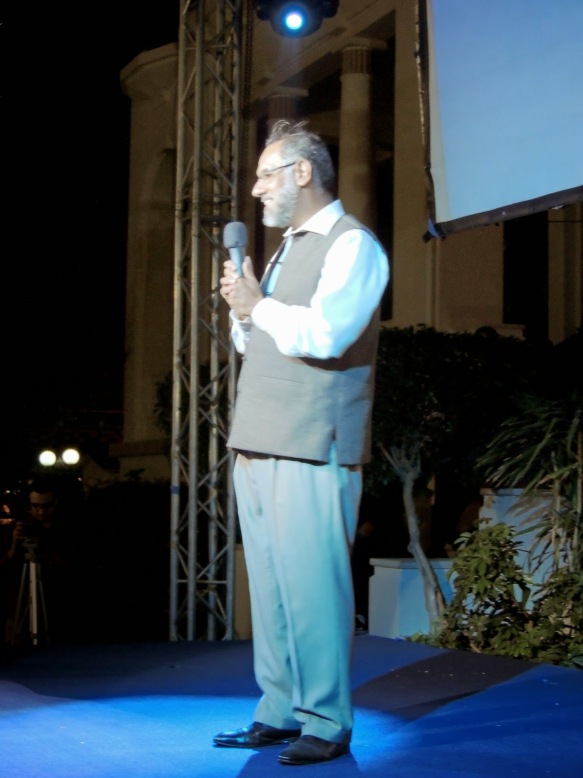

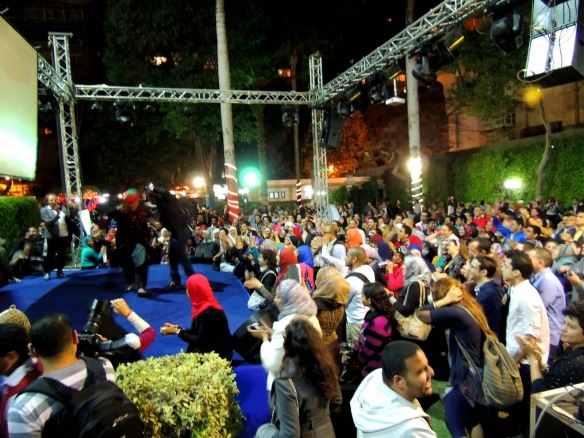

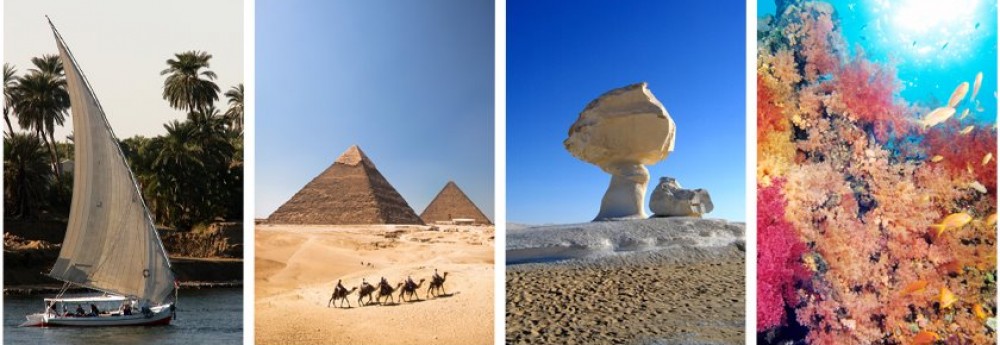
@ http://zeenews.india.com/news/nation/india-to-launch-mega-cultural-fest-in-egypt_921309.html








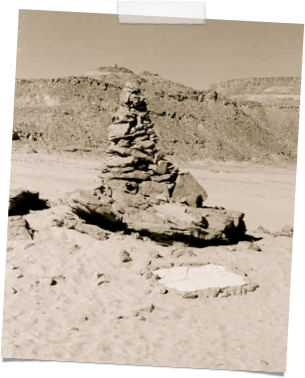
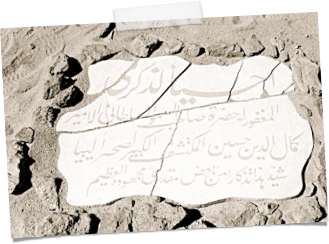
13 March 2014 – Arriving Cairo
Overseas participants arrive in Cairo. We will assist with hotel bookings and we will be delighted to assist and organize transfers to the hotels (only hotels listed as participating in Kamal Expedition).
14 March 2014 – Opening ceremony – Flight – Drive heading to Gilf Kebir
We will have a transfer organized from the hotels of our choice to the Kamal Expedition Opening Ceremony which will be held at the Automobile & Touring Club of Egypt in Cairo. You also have the choice of joining us independently at the Club if you wish. After a brunch and the ceremony we will be heading to the Cairo International Airport to catch a charter flight to Dakhla Oasis.
At the airport of Dakhla the packed 4×4 cars will be waiting for us and will bring us to have lunch. Meanwhile the last formalities will be finished with the government to have
a fast start to the desert after lunch. Divided into several groups, the participants will be leaving the Oasis heading south on the Asphalt Road. Leaving the road, our first visit will be the Balise of Saviem Trucks which traversed the entire Sahara from West to East in 1977 (from the Atlantic ocean to the Nile). In the area of G-Hills we will be looking for a camping place. In the evening we will have the chance to listen to an interesting lecture on a chosen topic related to the desert by one of our top speakers.
15 March 2014 – Wadi Eight Bells
After breakfast, we will be continuing in groups crossing different desert landscapes to approach the Gilf El Kebir plateau. We will find some relics from the Second World War: broken down Cars which were used by the British Special Forces, the Long Range Desert Group. We will also cross some dunes to reach the landing ground of 8 Bells where we will set up camps nearby. Like every night we will have the chance to listen to an interesting lecture on the desert by one of our top speakers.
16 March 2014 – Gilf Kebir – Wadi Wassa – Kamal El DIn Monument
We will be traveling through the Wadi Eight Bells to reach the Wadi Wassa and the Rock paintings of the Mararet el Qantara which was found in 1935 by a British explorer group under the leadership of Shaw. From here we will be heading south to the southern tip of the Gilf el Kebir Plateau where Almasy erected the Kamal El Din Monument 81 years ago. Nearby, we will find a set up prepared for the group. It will be on that occasion were all the groups will be gathered together and we would have a longer entertaining program for you that evening including the screening of a documentary film. If you do not feel like attending the screening, you could enjoy the calm evening weather some hundred metres away.
17 March 2014 – Camil Crater
After a late evening, the starting of the groups will be delayed. They will be heading to the south to reach the meteorite crater of Gebel Kamil, where they will be camping nearby. The evening will once again be filled with an interesting topic of one of the speakers.
18 March 2014 – Gebel Uweinat – Karkur Talh
The groups will be heading towards Gebel Uweinat to arrive there after a few kilometers looking for camping places in the Karkur Talh area and will be exploring the different sites of the Gebel Uweinat. In the evening there will be a chance of attending another interesting lecture.
19 March 2014 – Rock cave near Peter & Paul
There will be a chance to have a short hike in the mountain in the morning before heading back north to reach some interesting rock art caves near the mountain of Peter & Paul. In the evening another interesting lecture will be organized.
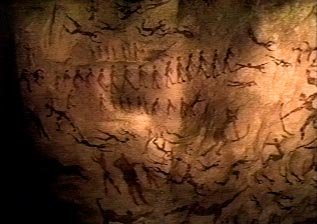
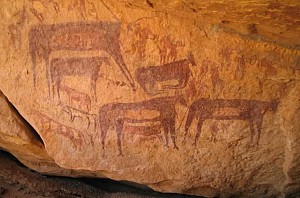
20 March 2014 – Gilf Kebir – Wadi Sura
We will be reaching the area of Wadi Sura (the Cave of Swimmers) which became famous through the 1997 film The English Patient. We will be visiting the Clayton Cave and the Chinati Camp site exploring some rock paintings nearby. Before that, we will have a second gathering in front of the Cave of the Beast. Here all the groups will unite for a second time to watch a short film about the life of the late Egyptian Father of Environment, Prof. Mohammed el Kassas, who died on that day (March 21st) one year ago in Cairo. Through different presentations and a film we will have a second longer night in that area.
21 March 2014 – Gilf Kebir Aqaba Pass
The groups will split up again to move over the Three Castles to the Aqaba Pass to drive on top of the Gilf Kebir Plateau and to cross some dunes which are on top of the plateau. Here we will be looking for different camping areas and have the chance to another interesting lecture.
22 March 2014 – Gilf Kebir – Wadi Hamra
We will reach the higher level of the Plateau and have a nice view at Belle Vue
onto the southern plane. Driving along the edge of the plateau we will reach a passage which will get us to the southern tip of Wadi Hamra. Here, we will be visiting different engraving sites and have a special look at the different Fauna of the Gilf el Kebir area. We will be camping at the northern exit of the Wadi Hamra where each group will get a chance to listen to an interesting lecture.
23 March and 24 March 2014 – Crossing Great Sand Sea
These 2 days we will be crossing the dunes of the Great Sand Sea having exciting passages crossing the dunes from west to east.
25 March 2014 – White Desert
We will be back near the Wadi Obaid and we will be entering the National Park of the White desert. Here a buffet will be waiting for all the participants. The groups will be spread in the National Park and a last evening with lectures will end our evenings in the desert.
26 March 2014 – Cairo – Closing Ceremony in Mena Hous
We will be leaving the White Desert National Park heading back to the road in a northerly direction reaching Baharya Oasis where a lunch will be prepared for everyone. After lunch, a 300 kilometre drive to Gizeh will bring us to the Mena House Hotel at the foot of the Pyramids. After a welcome coffee and cakes, the closing ceremony will be held in the hotel and will include a dinner. The anniversary of the Prince Kamal el Din monument will come to the end of its journey.
for more info visit : http://www.kamalexpedition.com
British tourists wishing to visit the Valley of the Kings, home to Tutankhamun’s famous tomb, can once again do so safe in the knowledge that they will be covered by travel insurance after the British government relaxed long-standing advisories.
The FCO is still warning against all but essential travel to a large part of the country including Cairo and the North Sinai but destinations such as Luxor, Aswan and the Abu Simbel temples in Nubia are back on the map.
Each of the Minister of Tourism, Environment,Communication and the Minister of State for Parliamentary and Legal Affairs resigned formally to the Council of Ministers to submit it to the presidency.
In protest at the poor performance of the institution of the presidency and not dealing with the will of the people and not to pay attention to events that fill the areas of Egypt .

Des paysages majestueux aux contrastes extraordinaires Paradis isolés, poches de civilisation au milieu du désert,refuges luxuriants loin du monde moderne, les oasis sont undes rares endroits de la planète qui échappent au temps.Situées à l’ouest du Nil, elles parsèment le désert occidental(ou désert Libyque) et ses dunes aux courbes sensuelles.
![14__DSC_2768[1]](https://egyptourism.files.wordpress.com/2013/05/14__dsc_27681.jpg?w=584&h=388)
De Siwa à Kharga, les oasis d’Egypte sont les plus variées aumonde, chacune possédant son caractère propre au milieu d’immenses étendues de sable noir, blanc ou doré et d’impressionnants paysages rocailleux.L’oasis de Siwase distingue culturellement du reste de l’Egypte.
![15__DSC_2858[1]](https://egyptourism.files.wordpress.com/2013/05/15__dsc_28581.jpg?w=584&h=877)
A l’ombre des palmiers/dattiers et des oliviers verdoyants, les Siwisy vivent pratiquement en autarcie. Siwa « l’authentique » s’attache à garder et perpétuer ses valeurs traditionnelles et ses coutumes ancestrales. L’eau y est miraculeusement très abondante et la multitude de puits, jardins, sources jaillissantes et fontaines d’eau chaude font oublier sa position dans l’un des déserts les plus arides du monde. Depuis plus de 2000 ans, le nom de cette oasis est associé à celui d’Alexandre le Grand.
![06__DE0084[1]](https://egyptourism.files.wordpress.com/2013/05/06__de00841.jpg?w=584&h=387)
C’est dans le temple dédié à Amon, au cœur de Siwa, qu’en 331 avant notre ère, les oracles ont confirmé la descendance divine d’Alexandre et sa conquête du monde. Ilot de verdure au milieu de l’océan saharien, les deux grands lagons qui l’entourent lui donnent une allure féerique Longtemps demeurées inconnues des égyptologues, les oasis du désert occidental livrent une multitude d’informations qui renouvellent considérablement l’histoire de l’Égypte
![11__DSC_2463[1]](https://egyptourism.files.wordpress.com/2013/05/11__dsc_24631.jpg?w=584&h=388)
pharaonique. Ainsi, l’oasis de Fayoum, célèbre pour la douceur de son climat et sa beauté, est un site touristique exceptionnel. A proximité du Caire, ses nombreux sites archéologiques et monuments témoignent de l’héritage historique et culturel laissé par les pharaons mais aussi par les civilisations gréco-romaine, chrétienne et musulmane.
![00__cu0456[1]](https://egyptourism.files.wordpress.com/2013/05/00__cu04561.jpg?w=584&h=387)
Un héritage géologique et culturel Plus au Sud,l’oasis de Bahariya recèle de sources chaudes et de spas naturels. Ses innombrables arbres fruitiers et savégétation dense contrastent avec les collines et les montagnesde sable partiellement couvertes de pierres noires qui l’entourent (le désert noir).C’est dans ce paysage majestueux et surprenant
que fut découverte la nécropole des fameuses « momies dorées » datant de l’époque gréco-romaine.Sur une bande de 60 km, coincé entre Bahariya et l’oasis de Farafra, s’élève alors un univers minéral magique,le désert blanc.
Véritable décor lunaire,hérissé de colosses de calcaire aux formes extraordinaires sculptées par la nature et le temps,cette banquise de sable et de pierres émerveille par sa géologie unique au monde.
![05__CU0364[1]](https://egyptourism.files.wordpress.com/2013/05/05__cu03641.jpg?w=584&h=387)
Les oasis de Dakhla, Kharga et Farafra sont concentrées dans la région de la nouvelle vallée, un des plus importants pôle d’attraction touristique d’Egypte. Grâce à leurs
sources sulfureuses froides et chaudes (jusqu’à 50°C !) riches d’éléments à valeur curative, ces oasis ont acquis une réputation mondiale de centre hivernal thérapeutique.
Le soleil y rayonne toute l’année, le climat y est sec même enhiver et les plantes herbacées de la région sont utilisées dans le traitement du diabète ou des rhumatismes par exemple.
A Farafra, les habitants excellent dans l’artisanat, Kharga, où se trouve l’unique aéroport du désert égyptien, abrite de nombreux sites anciens, et Dakhla est sans nul doute la pluspittoresque des oasis avec ses villages traditionnels, véritables labyrinthes de ruelles couvertes, bordées de maisons en boue séchée. Ses lacs naturels entourés de palmiers et de dunes de sable, ses champs dont le vert gras éclate sur l’ocre pâle du désert en font un lieu envoûtant truffé de sites archéologiqueset de réserves naturelles.
![02__DE0081[1]](https://egyptourism.files.wordpress.com/2013/05/02__de00811.jpg?w=584&h=387)
Idéalement de septembre à mai, il y a mille et une manières d’explorer cette terre de contrastes qu’est le désert Libyque.
A pied, à dos de dromadaire ou en 4×4, la diversité des paysages comblera les amoureux d’aventure et émerveillera les voyageurs en quête de culture et d’histoire.
![16__DSC_2927[1]](https://egyptourism.files.wordpress.com/2013/05/16__dsc_29271.jpg?w=584&h=388)
![01__DI0132[1]](https://egyptourism.files.wordpress.com/2013/05/01__di01321.jpg?w=584&h=387)
![10__DSC_2413[1]](https://egyptourism.files.wordpress.com/2013/05/10__dsc_24131.jpg?w=584&h=388)
![13__DSC_2648[1]](https://egyptourism.files.wordpress.com/2013/05/13__dsc_26481.jpg?w=584&h=388)
![12__DSC_2630[1]](https://egyptourism.files.wordpress.com/2013/05/12__dsc_263011.jpg?w=584&h=388)
![07__DSC_1979[2]](https://egyptourism.files.wordpress.com/2013/05/07__dsc_19792.jpg?w=584&h=388)
![08__DSC_2352[1]](https://egyptourism.files.wordpress.com/2013/05/08__dsc_23521.jpg?w=584&h=388)
Egyptian Minister of Tourism Hisham Zaazou headed a high level delegation representing Egypt at ITB Berlin 2013 that took place during the period from 6th to 10th of March 2013.

Nearly 100 exhibitors representing the most important Egyptian hotels, travel agencies, the Hotel Association, and the Travel Agents Association where exhibiting at the Egyptian pavilion covering an area of 1515 m2

It is worth mentioning that Egypt was the partner country of ITB Berlin in 2012. In this respect Egypt had taken the opportunity to maximize the coverage and promotion about the Egyptian destinations through a marketing strategy that included intensive advertising campaigns through conventional and non-conventional advertising channels as well as a public relation strategy that has been launched since the beginning of 2011. The campaign focused on wide participation in all major touristic and cultural events, the launching of press conferences and workshops.

ITB Berlin hosts around 106644 exhibitors representing 187 countries, in addition to 7000 Journalists representing 94 countries.






The unique geographical location of Egypt, at the northeast corner of the African continent, where it joins with Asia, coupled with the fact that it is bordered by the Mediterranean Sea to the north and the Red Sea to the east, endows it with a rich natural heritage.In a bid to take action to conserve and preserve its biodiversity, flora and fauna, Egypt passed law 102/1983, which empowered the Prime Minister of the country to designate certain areas to be declared as protectorates. To date, 28 protectorates have been declared, ranging from coastal, wetlands, geological and coastal protectorates.
Ras Mohamed was the first declared protected area in Egypt in 1983. It lies at the southern-most tip of the Sinai Peninsula, overlooking a panoramic view of the Gulfs of Suez and Aqaba. A diversity of shoreline configurations and coral reef ecosystems that are internationally recog-nized as some of the world’s best make up a small part of the park’s beauty, which also features mountains, valleys, gravel plains and sand dunes. In addition, more than 1,500 marine creatures can be found, which is why the park is a famous snorkeling and diving site. Ras Muhammad is located about 20 km from Sharm, and 446 km from Cairo. There is only one place in Ras Mohamed where camping is admitted but visitors must get a permit from the Park Management located at the entrance.

Zaranik Protected Area is located at the eastern end of Lake Bardawil on the Mediterranean coast of Sinai and was declared a protected area in 1985.It is bordered on the north by the Mediterranean, on the south by Qantara – El Arish road, and on the east by a huge compound of tourist development areas where one can find comfortable accommodation.The area is characterized by amazing flora and fauna, which includes rare species (up to 270), as well as migra-tory birds. It is located around 30 kms east of the town of El Arish and 300 km from Cairo, and can be reached by road. There are several budget campsites and some double rooms. Binoculars and telescopes are available for rent at the site.

Al Ahrash Reserve lies in the northeast corner of Egypt, bordering the huge expanded area of sand dunes that reach 60 meters in height above sea level.The reserve is famous for its trees and plants, which densely cover the reserve, making it a natural and serene haven. Numerous acacia trees, various camphor trees, bushes and pastoral plants can be found there.Located between El Arish and Rafah cities in Northern Sinai, it can be reached by road from these cities.

This relatively small area of the Mediterranean coastal desert is characterized by the richest and most diverse flora in Egypt. Dunes of white sand by the sea are followed further inland by limestone ridges separated by depressions, some of which contain salt marshes. It is the only protected area that has this type of habitat.Many birds migrate through in spring and autumn, provid-ing excellent bird watching opportunities. El Omayed is easily accessible from Alexandria, as well as the governorate of Matrouh.
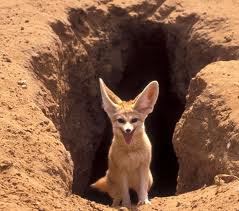
The Elba Protected area is an extensive and complex area comprised of a number of mangroves of the Red Sea, islands, coral reefs, coastal sand dunes, salt marshes, desert plains and a cluster of coastal mountains (Gabel Elba, Gabel Ebruq and Al Daeeb).
Gabel Elba is the only igneous mountain rising up to 1,437 meter. Its summit is a “mist oasis” where a considerable portion of the precipitation is contributed in the form of dew and clouds, creating a unique and rare ecosystem not found anywhere else in Egypt.
Some 458 species are known in the reserve. Gabel Elba also supports a rich faunal diversity unparalleled in any other desert environment in Egypt. Forty species of birds and twenty-three species of mammals including the endangered sea cow Dugong – and thirty species of reptiles are found here.It is located in the south-eastern part of the eastern desert. The distance from Cairo is around 1300km and there are many resorts around the area where visitors can stay.

The two islands of Salouga and Ghazal in the River Nile are located north of the High Dam. You can also visit the islands of Asbournati and Amoun and the plantation garden at Aswan, which are all located north of the reserve vicinity.
The reserve area is characterized by predominantly expanding bushes and 94 various kinds of plants. The favorable natural conditions in the area provides wildlife spotting opportunities, with 60 kinds of rare birds, as well as migrating birds. The two islands are about 3 kms north of the Aswan Dam. You can reach the islands from Aswan or from Cairo (a 7-8 hour drive; there is a bus that leaves Cairo daily).

The Park occupies much of the central part of South Sinai, mountainous region, which includes Egypt’s highest peaks St. Catherine’s Mountain – a favorite of many climbers Moses, Serbal, Umm Shomer and Tarbush mountains.Around 1,000 plant species, representing almost 40% of Egypt’s total flora are found in this region. Half of the 33 known Sinai endemics are also found in St. Catherine area. The white-crowned Black wheatear is very characteristic of the area. There are 46 reptile species,15 of which are found nowhere else in Egypt such as the Endemic Sinai Banded Snake and the Innes Cobra, which is considered to be very vulnerable to extinction. The Saint Catherine National Park abuts the coastal reserves of Ras Mohammed National Park, the Nabq and Ras Abu Galum Managed Resource Areas that lie along the Gulf of Aqaba. The coastal resorts, a mainstay of the Egyptian economy, are among the fastest growing tourism developments in the world.Many hotels are available for accommodation in the South of Sinai, as well as, around St. Catherine’s

Lake Qarun lies in the Fayoum Province, an easy drive from Cairo. A gently sloping sand-plain extends from the lake shore northwards and upwards to reach sea level at
7 km north of the shoreline. The lake is an important archeological site because of the presence of the numerous marine life with a unique collection of fossil fauna and flora that goes back to some 40 million years.It is well known for wetland of international importance for water birds. The 376-feddan-islet serves as the most convenient spot for bird reproduction, specifically the flamingo. It is also the incubator and the happy nest that embraces infant birds on the lake islets during reproduction time. The reserve contains several monuments including As-Sagha (goldsmiths) palace that lies at the northern part, dating back to the Pharaonic Middle Kingdom. Three km away from As-Sagha palace, lies Abu Lifa Monastery that was built in the monastic era on an elevated spot in the bosom of a mountain to keep monks secure from Roman aggression. Greek monuments include relics of the old town of Skitnopius, once the departure point for the south desert-bound trade caravans.Several eco lodges, as well as two 5 star hotels are avail-able in Fayoum for accommodation.

The Wadi El Rayan depression is located in the western desert of Egypt, about 65 km southwest of the town of El Fayoum and 80 km west of the Nile River. The vegetation is confined to inter-dune areas around springs and at the base of large dunes, and covers 13 species of plants. It is especially important, as it is home to the world’s only known population of the endangered Slender horned Gazella leptoceros. The Dorcas Gazelle is still found in the area in small numbers, as well as, the Fennec Vulpes zerda and Sand Fox.

Wadi El Allaqi is a valley formed by the drying up of a large river, 275 km in length with an average width of 1 km. Home to more than 90 species of annual and perennial plants, it also includes fifteen species of mammals, 16 species of birds, a few venomous reptiles, and a large number of invertebrates. The valley is easily accessible from Aswan.

The Assuiti Valley starts in the form of tributaries, mostimportant of them are the areas south of Qena Valley and up north. The Valley reserve differs from other Egyptian reserves as it is the sole station for breeding wild animals and wild plants endangered by extinction.

El Hassana Dome
The reserve is situated at Abu Rawash on Cairo-Alexandria desert road, about 8 km from Giza pyramids.El Hassana Dome, with its topographical merits and geological make-up, reflects a distinguished history. It is the sole location near Cairo that features remnants from the Higher Crestaeceous age, that dates back to about one million years. Its surroundings of rocks are from the Stone Age that were formed about 60 million years ago and the Rocky Age dating back to 40 million years ago.

In 1989, the area outside of Maadi (30 kms from Cairo’s downtown), known as the Petrified Forest, was declared a protectorate by Prime Ministerial decree. Roughly 35 mil-lion years old, the Petrified Forest is an astounding piece of the earth’s physical history. The six-kilometer expanse is strewn with the remains of trees from an early forest, which were washed to their current location by flooding from the Red Sea hills. The period in which this flooding and move-ment occurred is known as the Oligocene, when the Earth’s overall temperature experienced a great deal of cooling. What makes this period particularly unique is that the global cooling that occurred in it created an atmosphere that brought about the appearance of many new species, such as horses and elephants.

Sannur Valley cave
Sannur valley cave reserve is located in Beni-Suef, 10 km southeast of the city.
Due to the ongoing alabaster drilling operations, 54 big cavities leading to the caves in the bottom of the earth were discovered. They contain geological formations known as ups and downs. The most important feature is the quality of its natural formations that are the most rare in the world. They also represent an importance to researchers for conducting detailed comparative studies with regard to variations of ancient environmental conditions.

The largest coastal protected area on the Gulf of Aqaba, Nabq contains a variety of ecosystems in the Sinai Peninsula. With an area of over 600 kilometers square, Nabq contains 134 plant species, 6 of which are found only in Nabq, and the largest single stands of Arak bushes in the Middle East. Gazelles, Nubian Ibex, Hyrax and small mammal populations inhabit the adjacent desert. Herons, Spoonbills and Ospreys have sustainable breeding populations in and around the mangroves. Nabq (which is near Sharm El Sheikh resort), is an amazing site for diving and snorkeling as the coral reefs are extremely rich there. Reef profiles and therefore community structure are different from reefs in the Ras Mohammed National Park.

Abu Gallum is one of south Sinai’s best-kept secrets and is considered among the most picturesque protected areas in Egypt. Its spectacular granite mountains ending abruptly
on a narrow coastal plain, fronted by rich coral reefs makes it a worthwhile visit. Abu Gallum reserve houses 167 plant species, 44 of which are seen only in this area.You can trek to Abu Gallum from the Blue Hole camp in Dahab, which should take you about an hour. You can also enjoy a camel ride to Abu Gallum, which can be rented, along with a guide from the Blue Hole. If you opt to drive to Abu Gallum, the ride will take you two hours from Dahab.

Situated northeast of the Rosetta branch of the River Nile, Lake Burullus stretches over 460 square kilometers, and is considered the second largest natural lake in Egypt.The lake has many environmental treasures, most impor-tant being the salt swamps and sand plains, while high sand dunes cover the lake’s coasts. The area features over 135 types of land and water plants. Moreover, the site is a great bird watching location as it is convenient for receiving migrating wild birds.

The White Desert is considered the main attraction of Farafra, and is the second biggest depression by size located in Western Egypt, between Dakhla and Bahariya Oases. Located 45 km north of the town of Farafra, the White Desert has a white, cream color and has massive chalk rock formations that have been created as a result of occasional sandstorms in the area. You can also visit the hot springs at Bir Sitta and the El-Mufid Lake, also located near Farafra.

 Egyptians truly are a friendly bunch, as you’re sure to discover almost within moments of arriving in the country. In fact they’re known across the African continent for their openness and welcoming nature. Even faltering attempts at speaking a little bit of Egyptian Arabic, the language of modern-day Egypt, will be greeted with the deepest of respect and choruses of delight. But if this is not your first trip to the Middle Eastern country, you’ll already know that from experience. If it is your first trip then you may be pleasantly surprised. Any stereotypical imaginings will be quickly consigned to the mental dustbin.
Egyptians truly are a friendly bunch, as you’re sure to discover almost within moments of arriving in the country. In fact they’re known across the African continent for their openness and welcoming nature. Even faltering attempts at speaking a little bit of Egyptian Arabic, the language of modern-day Egypt, will be greeted with the deepest of respect and choruses of delight. But if this is not your first trip to the Middle Eastern country, you’ll already know that from experience. If it is your first trip then you may be pleasantly surprised. Any stereotypical imaginings will be quickly consigned to the mental dustbin.
Of course, you’re more interested in international payment services from HSBC or from any of the other major multinational banking giants for that matter which operate throughout this country of some 82 million people. After all, this is a business reconnaissance trip and not a two-week holiday in the Egyptian sun. Having said that, it’s hard not to mix a little bit of pleasure with business in a country where the ancient and the modern sit so comfortably side by side. Come on, this is Egypt, land of pharaohs, pyramids, deserts, bustling markets and 21st century business banking!
Recently, the whole world watched intently as radical change swept through the country. The political landscape, though still peppered with difficulties, has quietened down a great deal now and business is once more attempting to reassert itself and to adjust to the new realities. The signs are looking good. Yet despite the trials and tribulations, Gross Domestic Product (GDP) grew 3.3% in the second quarter of 2012 compared to the same period last year, a reflection of the country’s strong economic diversity. Indeed, the agricultural, industrial and service sectors continued to contribute to GDP growth in relatively equal measure.
Tourism, part of the services sector and a jewel in the crown of the Egyptian economy, remains a good business and investment opportunity. Not surprisingly, visitor numbers were greatly affected by the recent events in the country. However, all the latest indicators point to a recovering industry giving a much-needed boost to the country’s foreign currency earnings.
According to news agency Reuters, Egypt’s tourism minister Hisham Zaazou is confident tourist numbers next year will match the pre-revolution levels of 2010. Then, 14.5 million people visited Egypt, earning the country $12.5 billion. Now the Egyptian government is aiming even higher, with ambitious plans afoot to attract some 30 million tourists by 2020. Forming part of this is the auctioning of 28 million square meters of land for tourist developments in order to expand the vital industry. “I will start auctioning (the land) maybe next month, and before the end of 2013, all of the 28 million square metres will have been put on offer,” Mr Zaazou told Reuters, adding that the offer had already been met with interest from European and Gulf investors. Some of the sites to be auctioned are to be sold while others will be for lease. Sites due to come up for auction will include Red Sea resorts such as Ain Sokhna and Marsa Allam.
click this for more information
@africanbrains by Marc Mcilhone
Egypt has had its share of problems over the past two years and the country continues to work to get its political house in order. During that time Egypt has remained safe for foreign tourists. With the exception of a short period of time in 2011 — as the old regime was collapsing — and and for another short period of time before law and order could be restored, the country has not been dangerous.The issues that brought about the Revolution and its iconic mass protests and demonstrations were largely domestic political issues and we did not see foreign tourists targeted even during this period.Some foreign journalists who refused to heed advice and headed out into rowdy crowds with cameras were attacked in isolated incidents during the Revolution, and a few Western students in Egypt who foolishly decided to participate in some of the protests and who themselves engaged in illegal behavior (like throwing rocks and bottles from rooftops) ran afoul of the law and wound up in trouble with the local police. Although these incidents got widespread coverage back home, they were certainly not the norm for Westerners even during the height of the Revolution.
After the Egyptian Revolution ran its course, tourist operations in Egypt picked back up and continued, although with far fewer tourists visiting throughout the rest of 2011. Our company,Middle Eastern Adventures, returned to Egypt in early 2012, and we have had nothing but great experiences with our groups of American guests ever since. We coincidentally had groups in Egypt during the parliamentary elections and during both rounds of presidential elections in 2012 – periods during which the media back home often portrayed the rallies for new presidential candidates and parties as the same revolution-style mass protests seen the year prior – but everything with our groups went smoothly and our clients enthusiastically attested in their unedited, end-of-trip video reviews that they felt completely safe traveling to and around Egypt with us.
There were a couple of unusual – and again isolated – incidents out in the largely ungoverned Sinai region in which local bedouin held up or detoured tourists for up to 24 hours to get the attention of the central government back in Cairo, but they occurred in areas that are not currently recommended for unaccompanied tourism, and in all cases the tourists had ignored the warnings and ventured out anyway without proper accompaniment and security. Our groups always travel with government-provided security within Egypt, even in areas where it is perfectly safe to travel alone.
But disregarding the authorities’ advice as well as the common wisdom is the quickest way to find yourself in a sticky situation no matter where you’re traveling. The Egyptian government does an excellent job of securing the popular tourist areas, and travel and tour companies are partial to avoiding risks. Hence, it’s always best to follow sage advice, and the crowds, when traveling in the developing world.
More recently, the incident in which a few rogue protestors climbed the U.S. Embassy wall in Cairo and took down the American flag in the compound’s courtyard was a legitimate cause for concern. This type of activity is highly symbolic, and it was quickly condemned on all sides of the political spectrum. But even then, tourism in Egypt continued uninterrupted. In fact, clients on our recent women’s group trip that visited Egypt from mid- to late-October reported that they felt completely safe, welcome, and warmly received as they traveled around in style with Middle Eastern Adventures and our highly attentive American staff on the ground in Egypt.
The truth about Egypt is that its recent restlessness is more about internal domestic issues and about a proud and awakened people yearning for freedom and dignity. That’s what the Egyptian Revolution in January 2011 was all about, and the country continues to make its way toward this goal. Ordinary Egyptians all over the country warmly welcome foreign tourists, especially Americans, and they are always incredibly happy to see us returning.
Our media back home continue to perpetuate the myth that Egypt is unsafe for foreign tourists, and they love to play old clips of rallies and demonstrations in one tiny square in one city of Egypt from specific days every time a story on Egypt is reported. The funny thing to those of us actually on the ground in Egypt every month is that we see these same news reports and stories on TV from our hotel rooms, then we look out the window and see life on the streets of Cairo going on as normal – calmly and peacefully. Then we look back at the TV screen and see clips being played from months or even years ago now and we can’t help but laugh.
Those who can see past the facade and who are willing to come visit Egypt are always surprised to find out how amazing the experience is, even now, and the fact that tourism is depressed generally across the region means that it’s the perfect time to come see this country without the congestion and crowds that you normally see at Egypt’s world-famous sites and monuments
@huffingtonpost
A small number of tourists recently climbed the crumbling ramparts of Shali fortress to photograph the oasis town of Siwa in Egypt.
Between the 13th to early 20th century the fortress was home to Siwans who lived inside the salt and mud brick walls to protect themselves from marauding Bedouins who came from the north coast and over what is now the nearby Libyan border to steal from and sometimes kill these farming people.
A freak rain storm in the 1930s damaged the walls, which left them now resembling a collapsing sand castle.
This historical and picturesque setting was once a rich hub for local and international tourists, but in in post-revolution Egypt, numbers have decreased.
Until the popular uprising in early 2011, the industry accounted for more than a 10th of Egypt’s Gross Domestic Product (GDP), but foreign tourists have shown reluctance to return as sporadic unrest continues to haunt the country.
The annual Muslim celebration of Eid al-Adha is traditionally a time when Egyptians travel and in Siwa those in the tourist trade were relieved to have full tables in restaurants like Abdu’s.
This low budget eatery is recommended by the Lonely Planet guide book, making it top of the list for backpackers from abroad. But the majority of their income this year has come from domestic tourists.
This is not, according to Siwa Tourist Information Manager Mahdi Hweiti, the most desirable demographic.
”International tourism is better than domestic tourism,” said Hweiti.
”International tourists from Europe rent bikes, buy local handicrafts and they stay in the hotels for long periods, but the domestic tourists, even foreigners who live in Cairo or Alexandria, only come for short periods during the national holidays and they don’t spend much money like the international tourists coming from Europe, Asia or America,” he added.
Hweiti said overseas visitors typically make up some 25 percent of tourist numbers in Siwa.
One group of 50 mid-20-year-olds from Alexandria were in Siwa during the recent Eid al-Adha to experience the western desert and hit the dunes in a convoy of four wheel drives hired locally.
There is plenty of excitement to be had in the “Sea of Sand,” the world’s largest stretch of sand dunes and a place so vast and disorienting that myths perpetuate of whole armies being lost there.
Even experienced drivers can make mistakes on this treacherous terrain, but a short delay provides another great photo opportunity for city visitors who may might not pay the same premium as foreign tourists — Egyptians are famed for their bargaining powers — but restaurant manager and tour organizer Fathi Abdulla said they are highly valuable to the local economy.
“Domestic tourism is very important for Egypt as a whole and for Siwa specifically and all the oases,”’ said Abdulla.
“Domestic tourists come and buy handicrafts and local products, it’s easy to carry as much weight as you like and it’s easy to take it anywhere in Egypt. For international tourists it’s hard to carry heavy weight items while travelling. So each form of tourism has its value,” he added.
While they may spend less per person, local tourists are greater in number and as this year’s earnings show, have been a more reliable source of income for the sector.
Meanwhile, the Egyptian Tourist Association is working to recover Egypt’s image and bring visitors back.
Numbers of overseas visitors dropped from 14.5 million in 2010 to 9.8 million in 2011 and earnings fell from two billion U.S. dollars to 1.5.
In early October, Tourism Minister Hisham Zaazou said he was targeting 11-12 million tourists this year. Zaazou said in the first nine months the country saw 8.8 million visitors.
The first bus made it along the newly built tarmac road in 1985 and the first guide books covered Siwa in 1987. Hweiti founded the tourism office in Siwa in 1996, but he worries about the effect of tourism on the local community.
“The threat when lots of tourists come here is that people here will leave their work in the fields and gardens and nobody will do manual work, everybody will turn to work in safaris, restaurants and handicrafts,” Hweiti said.
“They’ll be tempted by the money. This is a serious threat,” he expressed.
But with a drop-off of 90 percent in visitor numbers since the uprising, according to Hweiti, there is no immediate danger of this.
Agriculture is still the mainstay of the local economy with tourism making up some 20 percent of income, he estimated.
The area around Siwa offers excursions of several hours up to several weeks and the group from Alexandria tried out sand boarding before washing off the sand in first a hot spring, then a cold natural spring set in the middle of desert.
For group organizer Islam Saad from Alexandria, Siwa was a refreshing break from cosmopolitan life and a reminder of a simpler time.
“I came to Siwa because it’s an amazing place and it’s where I have the most fun. It’s a really simple place with lots of lakes and oases,” he said.
“I’m having fun with my friends and we’re spending four days here. We see the simplicity of the houses and how Siwans live. It’s a really nice place and I recommend everybody to come here,” Saad added.
Saad organizes trips like this two or three times a year and he is not alone.
Many Egyptians with disposable income travel and because of the cost of flights and the difficulties in getting visas for foreign travel, domestic trips to places like Siwa are popular.